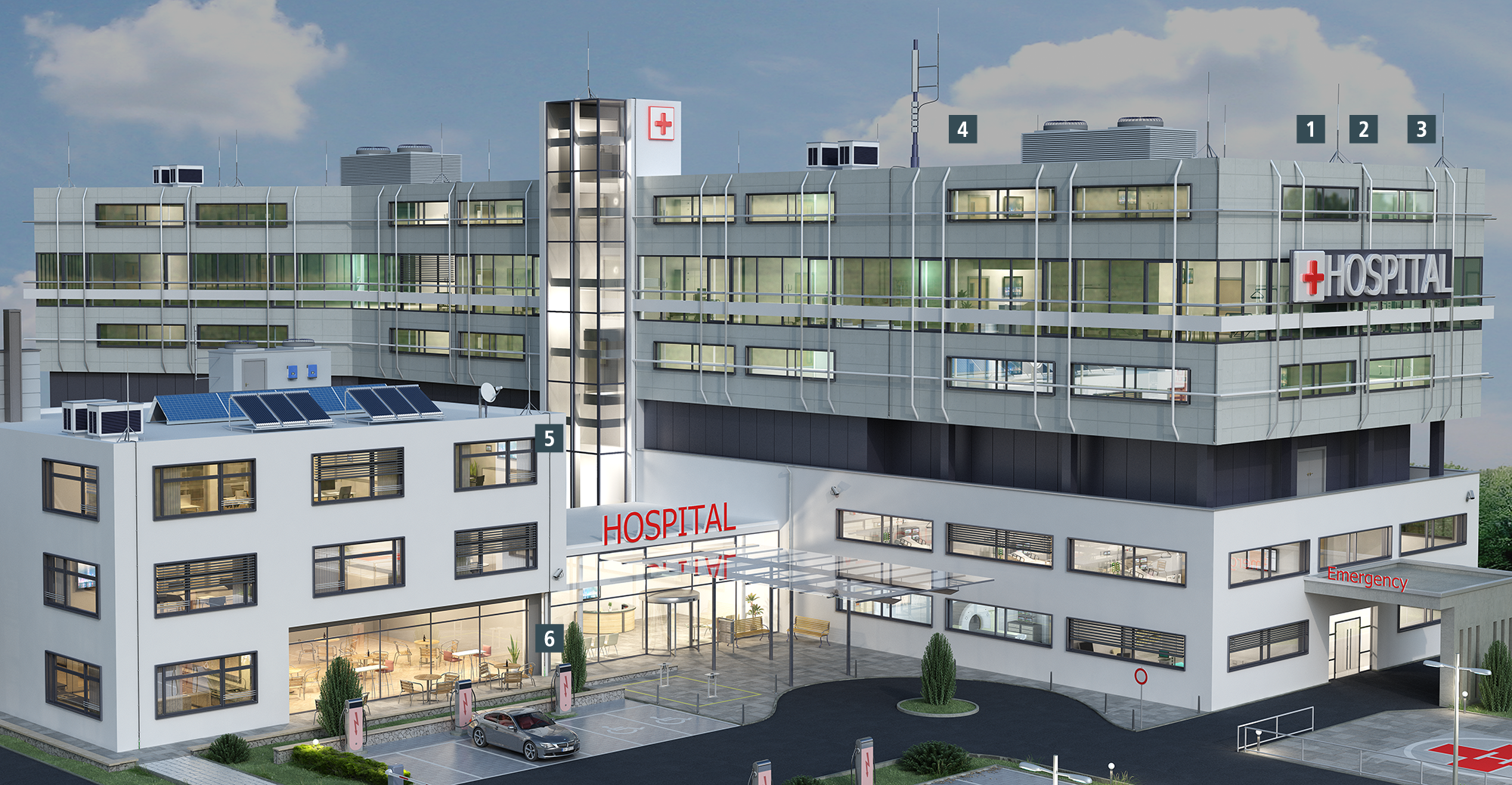External lightning protection – for safe hospitals.
Preventing damage from lightning strikes and protecting human life are absolutely vital activities for hospitals, with their highly critical infrastructure. This is why it is obligatory for an external lightning protection system to be set up.
During planning, the LPS classes of the individual building areas must be taken into account. For example, operating theatres are subject to LPS class II; offices and ward buildings, LPS class III. For more information on the classes of LPS, please refer to EN 62305-3, Supplement 6.
Detailed planning of the measures is necessary to ensure that all specifications for protection are met.

/www.dehn-international.com/store/f/42389133/HDVORSCHAU/105325.jpg)
105325
GRP/Al supporting tube with air-termination tip
GRP/Al supporting tube with side outlet for stands, internal sealing end and EB spring element for the HVI long Conductor, for the separated (isolated) installation of air-termination systems with an air-termination tip.
/www.dehn-international.com/store/f/42384060/HDVORSCHAU/107390.jpg)
107390
Tripod
Tripod (hinged design) for supporting tubes D 50 mm with side outlet or air-termination rod D 40 mm with reduction accessories.
/www.dehn-international.com/store/f/42384292/HDVORSCHAU/102012.jpg)
102012
Concrete base
Concrete base but without wedge, for the erection of tripods with M16 threaded rods.
/www.dehn-international.com/store/f/42388840/HDVORSCHAU/819135_TR.jpg)
819135
HVI long Conductor
High-voltage-resistant, insulated down conductor for maintaining the separation distance from electrically conductive parts as per EN 62305-3 to prevent dangerous flashovers between parts of the external lightning protection system and internal conductive parts.
/www.dehn-international.com/store/f/42376213/HDVORSCHAU/253026.jpg)
253026
Roof conductor holder for HVI Conductors
Roof conductor holders with conductor supports, type FB, for attaching round conductors or strips (with adapters) with loose cable routing on flat roofs.
/www.dehn-international.com/store/f/42388623/HDVORSCHAU/275250_1.jpg)
275250
Conductor holder for HVI Conductors
Conductor holder with two-screw clamp, type stainless steel, e.g. for wall mounting.
The right way to external lightning protection for hospitals.
External lightning protection works using air-termination systems that you install on the roof. As the name suggests, they intercept direct lightning strikes and channel them away safely into the ground. The basis for this is that the external lightning protection system is connected to the earthing and equipotential bonding via the down conductors.
Hospitals have densely packed roof structures. These include, for example, components for heating, ventilation and air conditioning (HVAC), lift shafts or PV systems. If you consider optimisations as part of energy management and a corresponding expansion of solar power generation, free roof space will be reduced even further. This makes it difficult for planning engineers to place the external lightning protection in accordance with the specifications.
The challenge for you: It is imperative that separation distances are maintained between the air-termination system and conductive metallic parts in order to avoid sparking. Due to the lack of space on hospital roofs, however, this is often difficult.
The solution: HVI Conductors. By using these high-voltage-resistant insulated down conductors, you can disregard separation distances and still be sure that lightning currents are safely discharged to the earthing system. That is why HVI Lightning Protection is a reliable and space-saving alternative to conventional lightning protection systems.
/www.dehn-international.com/store/f/42382701/HDVORSCHAU/459129.jpg)